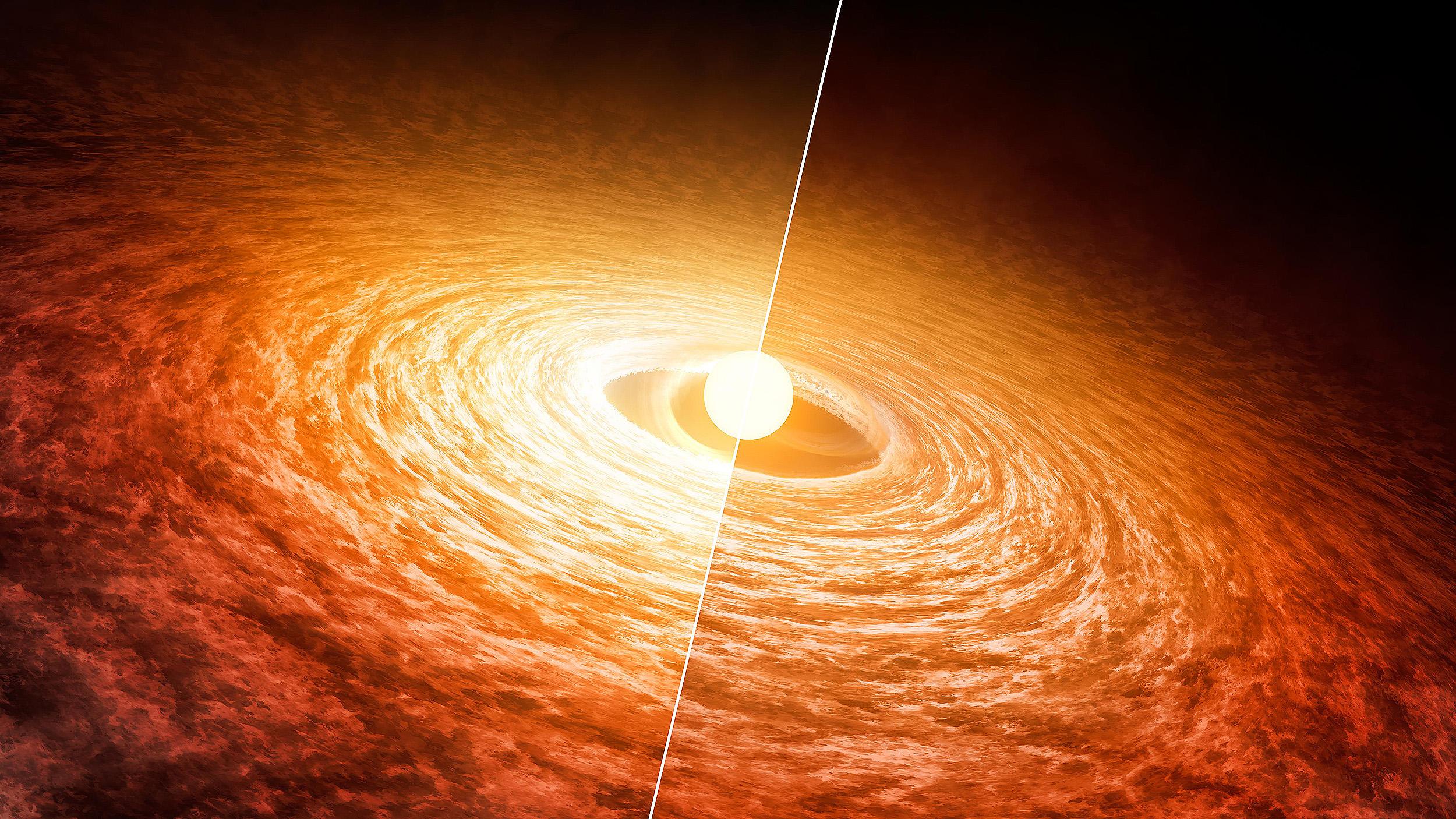Table of Contents
- Introduction to Beta Pictoris
- The "Feline's Tail" Discovery: A Closer Look
- Insights from Webb's Infrared Observations
- Theories Behind the Dust Structure Formation
- Implications for Planetary System Evolution
- Future Research and Exploration
1. Introduction to Beta Pictoris
Beta Pictoris is a young planetary system located 63 light-years away in the constellation Pictor. Known for its bright debris disk, it has been a subject of extensive research since the 1980s. The system gained prominence when it became the first to have its debris disk imaged around another star. This disk, composed of dust and debris from collisions between asteroids, comets, and planetesimals, offers a unique perspective on planetary formation and system dynamics.
Over the years, studies have revealed intricate features, including multiple debris disks and exoplanets within the system. NASA’s Hubble Space Telescope first identified a secondary, inclined debris disk, while ground-based observations provided initial insights into its composition. Now, the James Webb Space Telescope (JWST) has unlocked a new chapter in the Beta Pictoris story by detecting a never-before-seen "feline's tail" structure.

2. The "Feline's Tail" Discovery: A Closer Look
The "feline's tail" is a dust trail spanning approximately 10 billion miles, extending from the southwestern part of Beta Pictoris’ secondary debris disk. This structure is discernible only in mid-infrared wavelengths, which JWST's MIRI (Mid-Infrared Instrument) excels at detecting. The tail’s peculiar shape and sharp curvature have puzzled astronomers, prompting hypotheses about its origin.
Scientists speculate that this feature is relatively young, likely formed by a recent high-energy collision between celestial bodies, such as asteroids or comets. The resulting debris, influenced by Beta Pictoris’ intense starlight, creates the illusion of a curved "tail."
3. Insights from Webb's Infrared Observations
The JWST’s infrared capabilities revealed that the "feline's tail" and secondary debris disk contain hotter and darker material compared to the primary disk. These differences suggest variations in composition, likely due to the tail's origin in a violent collision.
Material in the tail resembles porous, carbon-rich organic compounds, similar to comet and asteroid matter in our solar system. For example, samples from asteroid Bennu, collected by NASA’s OSIRIS-REx mission, exhibit properties akin to those detected in Beta Pictoris' debris. This highlights the potential for comparative studies between exoplanetary systems and our solar neighborhood.

4. Theories Behind the Dust Structure Formation
Astronomers believe the tail formed from a dust production event, possibly triggered by a collision involving asteroids, planetesimals, or comets. The debris initially followed its parent body's orbital path before spreading out due to radiation pressure from Beta Pictoris.
The unique curvature of the tail is attributed to its interaction with starlight. Smaller, lighter particles are pushed outward faster, while larger grains remain closer to the system's core. This interaction creates a distinctive, arched appearance when viewed edge-on.
5. Implications for Planetary System Evolution
The discovery of the "feline's tail" offers valuable insights into the dynamic processes shaping young planetary systems. By studying the tail’s composition and trajectory, astronomers can infer details about past collisions and material exchanges within Beta Pictoris.
These findings may also shed light on the evolution of debris disks and their role in planet formation. Similar processes likely occurred in our early solar system, where collisions and dust interactions paved the way for the development of planets and moons.

6. Future Research and Exploration
Despite these groundbreaking revelations, many questions about the "feline's tail" remain unanswered. Future observations and modeling are required to fully understand its origin and behavior.
Astronomers plan to leverage the JWST’s advanced instruments to monitor changes in the tail's structure over time. Additionally, comparisons with other systems featuring debris disks will help refine theories about planetary system formation and evolution.



You must be logged in to post a comment.